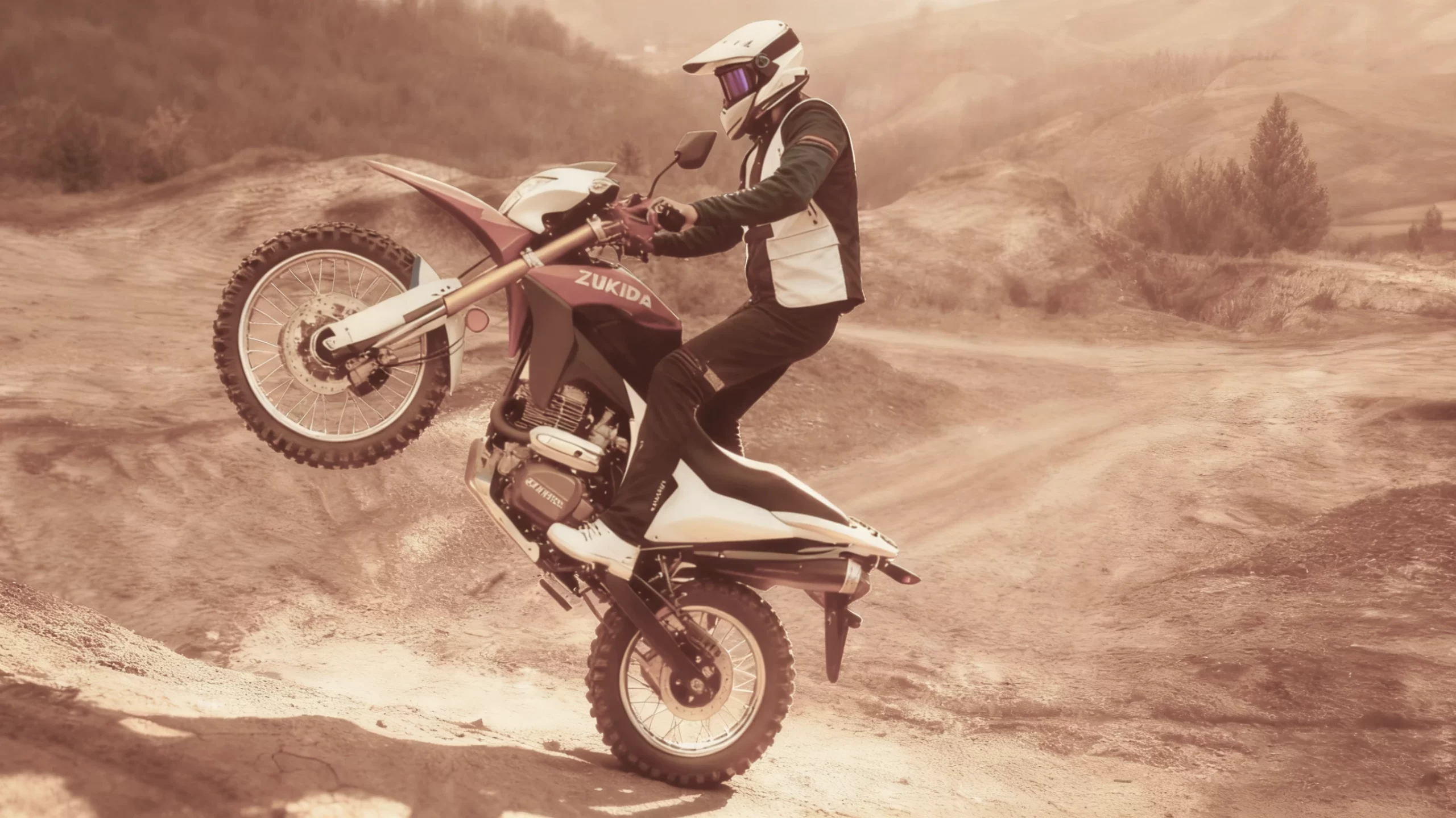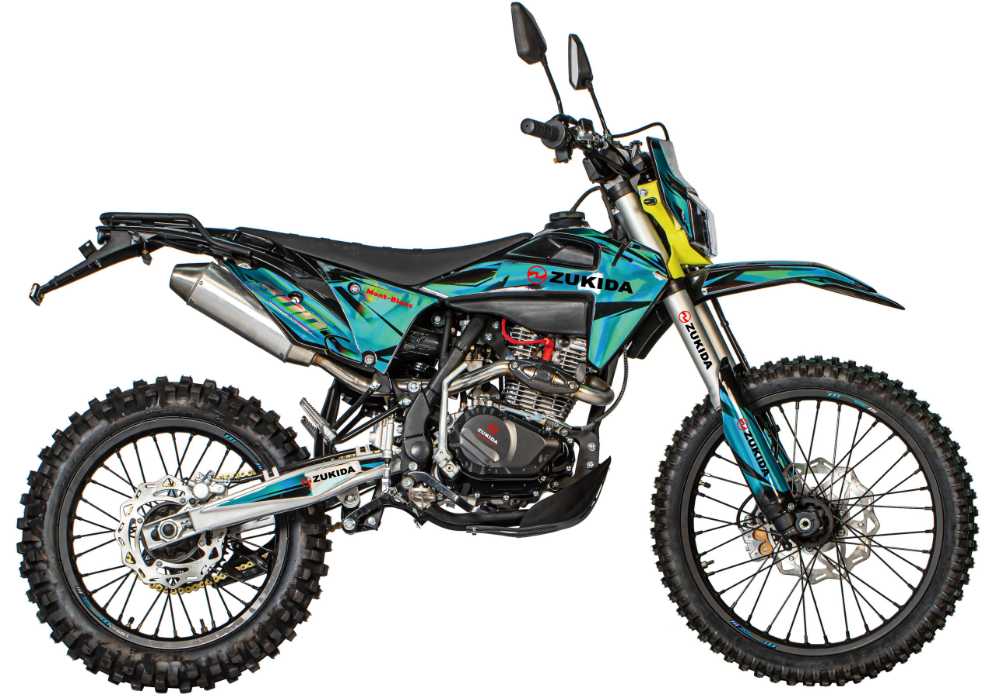The Dynamic Geometry of the Dirt Bike: An In-depth Guide to the Art of Rider-Machine Integration (2025)

The dirt bike is a machine of profound and dynamic purpose. Unlike any other vehicle, it is not designed to be operated from a static, seated position. Instead, it is engineered to function as a dynamic extension of the rider’s own body—a mechanical counterpart in a complex dance of balance, leverage, and momentum. The ultimate expression of off-road skill is not found in the raw power of the engine, but in the seamless integration of rider and machine, a state where the two entities merge into a single, terrain-conquering system. This state of symbiosis is achieved through a deliberate and sophisticated engineering philosophy we can formally define as “Dynamic Geometry.”
In the advanced engineering landscape of 2025, Dynamic Geometry represents the pinnacle of off-road design. It is the science of crafting a chassis, suspension, and ergonomic profile that actively invites and rewards the rider’s physical inputs. It moves beyond the concept of a rider simply “operating” a vehicle, and into the realm of the rider “partnering” with it. To understand the modern dirt bike is to understand this intricate relationship between the static geometry of the machine and the dynamic geometry of the human body in motion.
This guide will serve as a formal exploration into this advanced concept. We will dissect how a dirt bike’s core components are meticulously designed to facilitate this rider-machine integration, and how this philosophy translates into superior control in the chaotic off-road environment. This deep, biomechanical approach to engineering is central to our mission at Zukida. Our development of a dedicated Dirt Bike lineup, including the versatile Zukida Crosser and the technologically advanced Zukida Supermach, is a direct result of our commitment to this philosophy. We do not just build off-road vehicles; we engineer platforms for human performance. Join us in this deep dive into the art of dynamic integration.

Part 1: The Rider’s Platform – Engineering the Ergonomic Interface
The foundation of Dynamic Geometry lies in the “cockpit” of the dirt bike. Every point of contact is engineered not for passive comfort, but to serve as a precise interface for rider input and control, particularly from a standing position. This is the platform upon which the entire rider-machine partnership is built.
The Seat: A Tool for Transition, Not for Sitting
The long, flat, and narrow seat of a dirt bike is one of its most misunderstood components. Its primary purpose is not for the rider to sit on during active riding. Instead, it is a transitional tool. Its flatness allows the rider to slide their body weight forward for cornering or backward for climbing and braking without obstruction. Its narrowness allows the rider to grip the bike firmly with their knees and legs, effectively locking their lower body to the machine’s core. This grip is the fundamental connection point in the integrated system.
The Footpegs: The Pivot of Control
The footpegs on a dirt bike are not passive rests; they are the primary pivot and input point for steering and balance. They are wide and sharp to provide a secure, load-bearing platform for the rider’s entire body weight. By weighting the outside peg in a corner, the rider can exert powerful leverage on the chassis, influencing the bike’s lean angle with a precision that handlebar inputs alone cannot achieve. Their high and central placement is a deliberate geometric choice that positions the rider’s center of mass for optimal influence over the machine.
The Handlebars: The Lever of Fine Adjustment
While the rider’s legs and core provide the gross inputs for balance and lean, the wide handlebars serve as the lever for fine adjustments and front-wheel control. The width is a matter of leverage—it allows the rider to counteract deflections from rocks and roots with minimal effort. The bend and rise of the handlebars are carefully chosen to allow for a comfortable and powerful “attack position” when standing, with elbows up and out, ready to absorb impacts and guide the front end.
The Zukida Approach: In engineering our off-road models, we place immense focus on perfecting this ergonomic platform. We understand that a rider who is comfortable and confident in the standing attack position is a rider who will be in full control. This commitment to a refined ergonomic interface is a hallmark of a Zukida off-road machine.
Part 2: The Machine’s Response – The Role of Chassis and Suspension
If the ergonomics provide the platform for rider input, the chassis and suspension are the systems that receive, interpret, and respond to those inputs while simultaneously negotiating with the terrain. This is the mechanical side of the Dynamic Geometry equation.
Chassis Rigidity and Flex: The Communicative Skeleton
The modern dirt bike chassis is a marvel of materials science. It is engineered to be incredibly rigid in some directions (laterally, to ensure precise tracking in corners) but is also designed with a specific amount of “engineered flex” in others (vertically and torsionally). This controlled flex is not a weakness; it is a crucial feature. It acts as a part of the suspension system, absorbing small, high-frequency bumps and providing the rider with a clearer feel for the available traction. An overly rigid chassis would feel harsh and deflective, while an overly flexible one would feel vague and imprecise. Finding this perfect balance is a key focus of our advanced frame design, a process refined over our 20+ years of manufacturing experience.
Suspension: The High-Speed Negotiator
The long-travel suspension is the most visible aspect of a dirt bike, but its true genius lies in its dynamic response. It is a high-speed hydraulic negotiator, constantly managing the forces between the wheel and the chassis. Its role in Dynamic Geometry is to keep the tire on the ground as much as possible, ensuring the rider’s inputs have a consistent effect.
- Damping Circuits (Compression and Rebound): Sophisticated internal valves control the flow of oil within the fork and shock. This “damping” is what prevents the suspension from simply acting like a pogo stick. Compression damping controls the speed at which the suspension compresses, while rebound damping controls the speed at which it extends. The ability to adjust these circuits allows a rider to tune the bike’s response to their weight, skill, and the specific terrain.
A well-tuned suspension works in harmony with the rider’s body movements. As the rider pushes their weight into the pegs in a corner, the suspension compresses predictably, helping to drive the tire into the ground for more grip. It becomes an active partner in the act of cornering.
Part 3: The Powerplant – The Engine as a Tool for Traction
In the context of Dynamic Geometry, the engine’s primary role is not to produce maximum horsepower, but to generate controllable traction. The powertrain must be a precise instrument that allows the rider to finely meter out force to the rear wheel in a low-grip environment.
The Four-Stroke’s Tractability
The modern four-stroke engine, which forms the basis of our gasoline-powered dirt bikes, is prized for its tractable power delivery. It produces its power in a smooth, linear fashion, making it easier for a rider to find the delicate point between forward momentum and wheelspin. The predictable character of an engine like that in the Zukida Crosser allows the rider to feel more connected to the rear tire, using the throttle not just for speed, but as a tool for steering and maintaining balance.
The Electric Motor’s Unprecedented Precision
The electric powertrain has revolutionized this aspect of off-road riding. An electric motor offers a level of precision in its power delivery that is unparalleled.
- Perfectly Linear Response: The relationship between the throttle input and the power output is perfectly linear. There is no “powerband,” no sudden hit of power. This allows the rider to make microscopic adjustments to the rear wheel’s torque, which is a definitive advantage in slippery, technical terrain.
- The Elimination of Stall: An electric motor cannot be stalled. This completely removes a major source of rider error and anxiety on steep, difficult hill climbs, allowing them to focus entirely on balance and line selection.
The Zukida Supermach was born from our recognition of these inherent advantages. We saw an opportunity to create a new kind of off-road partnership, where the powertrain’s digital precision could elevate the rider’s control to a new level. This forward-thinking approach is a direct result of the strategic vision that led to the formation of our specialized export company, Zukida Motorcycle Co., Ltd., in 2020.
Conclusion: The Dirt Bike as the Ultimate Partnership
The modern dirt bike is the ultimate partnership between human and machine. It is a vehicle engineered with the profound understanding that the rider is not a passive passenger, but the most critical component of the entire system. The philosophy of Dynamic Geometry—the deliberate engineering of a platform that invites and rewards the rider’s active, physical input—is what makes this machine so uniquely capable and so deeply rewarding to master.
The narrow seat, the wide handlebars, the communicative chassis, the responsive suspension, the tractable powertrain—these are not isolated features. They are the interlocking elements of a single, cohesive system designed to facilitate the art of rider-machine integration. To ride a dirt bike skillfully is to feel this system come alive, to feel the machine become a seamless extension of your own will, a partner in a dynamic dance across the landscape.
At Zukida, our commitment to the off-road segment is a commitment to this philosophy. We bring our decades of manufacturing expertise and our deep respect for the art of engineering to this demanding discipline. We do not just assemble components; we craft integrated systems designed to elevate the rider. Whether you are exploring the versatile capabilities of our gasoline-powered Enduro models or experiencing the unprecedented control of our electric off-roaders, you are riding a machine that was built with a deep understanding of this ultimate partnership.
We invite you to explore the Zukida off-road lineup and discover a machine that is not just waiting to be ridden, but is waiting to partner with you on your next great adventure.

9 thoughts on “The Dynamic Geometry of the Dirt Bike: An In-depth Guide to the Art of Rider-Machine Integration (2025)”
Finally, a clear explanation of topic. It’s crucial for importers to understand these technical details. Looking forward to the next update.
Great insight regarding topic. I’ll be sharing this guide with my sales team for training purposes. Best regards from our team.
Excellent write-up. topic is indeed a major factor when clients choose a supplier.
We appreciate Zukida sharing knowledge about topic. It builds trust for long-term cooperation.
Very informative post on topic. Keep up the good work with the blog content.
We appreciate Zukida sharing knowledge about topic. It builds trust for long-term cooperation.
The points you raised about topic are valid. The motorcycle industry needs more transparency like this. Ride safe.
This article on topic is spot on. As a distributor, we encounter these exact market trends daily.
This analysis of topic aligns perfectly with what we are seeing in the Southeast Asian market. Keep the updates coming.